Vicksburg National Military Park
Introduction
Text-to-speech Audio
Images
This map shows the Confederate and Union troop movements leading up to the siege from late April to early July.
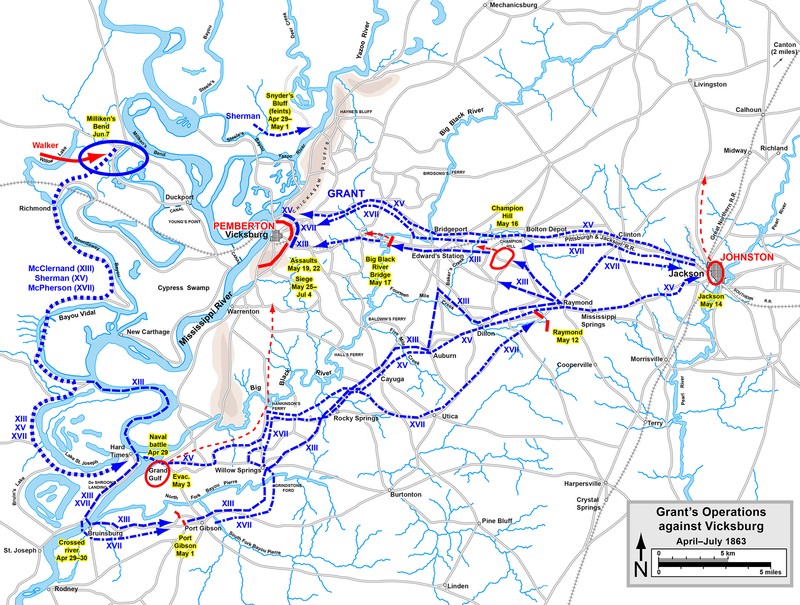
General Ulysses S. Grant (1822-1885), commander of the Army of the Tennessee.
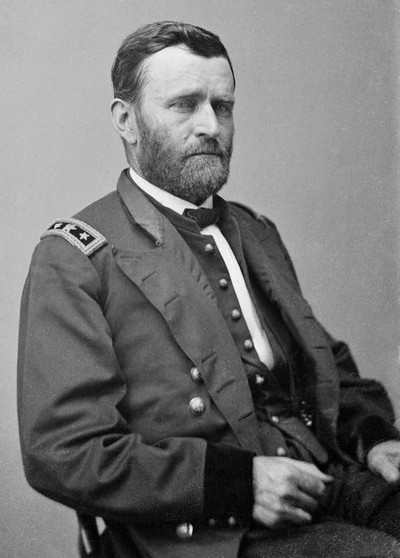
General John C. Pemberton (1814-1881), commander of the Army of Mississippi.
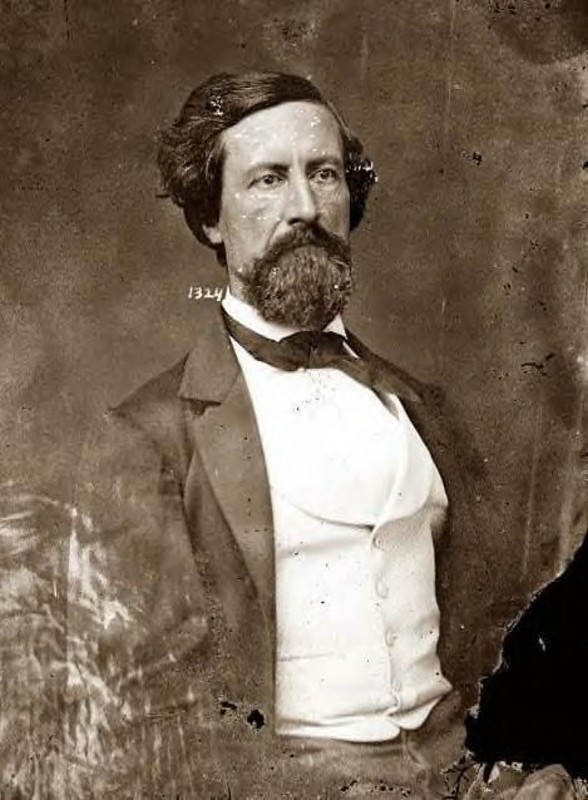
Large Union cannons bombarded Vicksburg throughout the seige.
_(14576375107).jpg)
Vicksburg's defenses included large cannons such as this one.
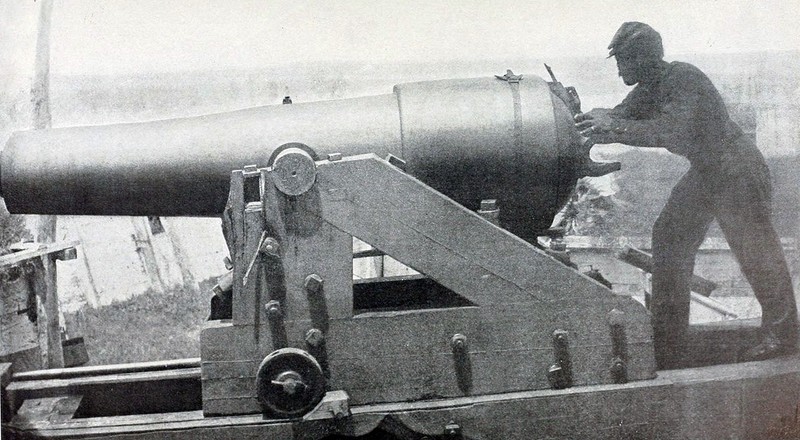
Constant Union artillery fire forced civilians to live in caves during the siege.
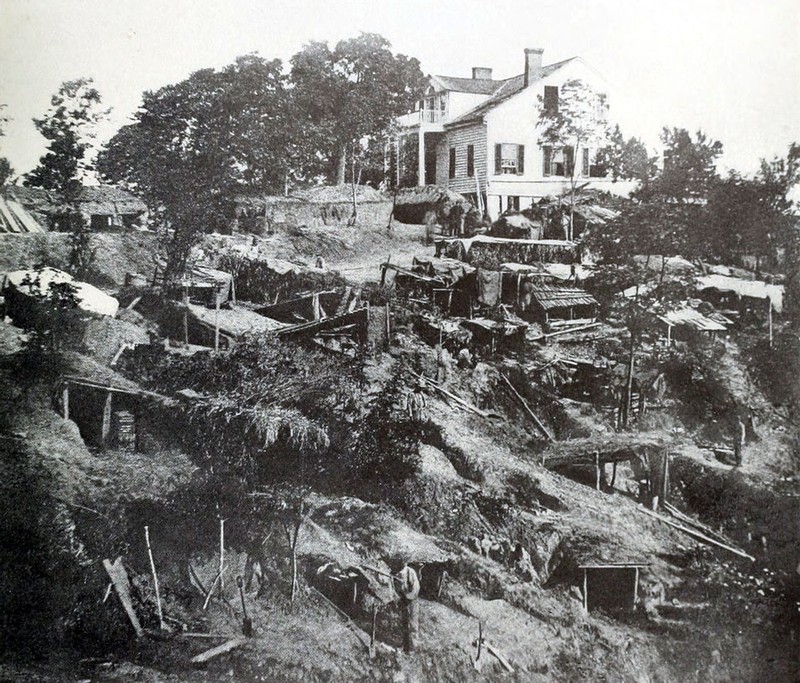
The Illinois monument is one of numerous monuments and memorials dispersed throughout the park.
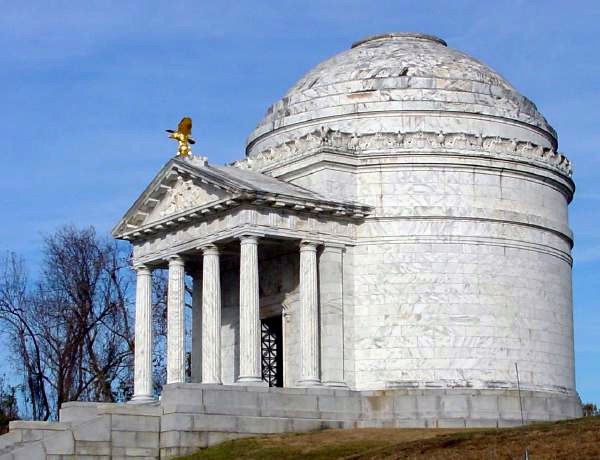
Backstory and Context
Text-to-speech Audio
Vicksburg Campaign and Siege
The Union knew that capturing Vicksburg was critical to winning the war. As a major railroad hub and port city, it was an important commercial center and a link to the Gulf of Mexico. It was so important that Confederate President Jefferson Davis called Vicksburg "the nailhead that holds the South's two halves together." President Abraham Lincoln recognized this as well, declaring "Vicksburg is the key. ...The war can never be brought to a close until that key is in our pocket." Capturing the city would divide the Confederacy in two and allow the Union to freely conduct trade in the Gulf and transport supplies and troops.
The Vicksburg Campaign consisted of a long and complex sequence of battles and naval and troop maneuvers in Mississippi (a few occurred in eastern Arkansas and Louisiana as well) that began at the end of December, 1862. Initially, the campaign didn't go well. Grant, who commanded the Army of the Tennessee, first planned to attack Vicksburg on two fronts. One half of Grant’s men would cross the Yazoo River north of the city and and march down from the northeast, and Grant would take the rest of the army down the Mississippi Central Railroad. He hoped that these maneuvers would draw the Confederates out of Vicksburg. This plan failed.
Eventually, Union ironclad gunboats and boats transporting soldiers were able to run the batteries at Vicksburg and pair up with the rest of the troops who had been marching south on the Louisiana side of the river. Over the last two days of April, the troops crossed the Mississippi River, confusing the Confederates in a series of diversions. Once in Mississippi, Grant ordered the troops who crossed the river to head towards the capital city of Jackson. The tide began to turn into the Union's favor when they captured the capital city of Jackson on May 14. This attack completely surprised the Confederates, who only had a small force guarding the city, and it isolated Vicksburg from the rest of the South.
Union troops finally reached Vicksburg on May 18. Confederate forces guarding the city were led by General John C. Pemberton, who commanded between 30,000 to 40,000 troops. Union troops numbered up to around 77,000. Over the course of the next several weeks through June, the Union troops besieged the city, bombarding it with constant artillery fire. Both Confederate and Union troops dug trenches around the city. Most residents lived in caves they dug by hand. Needless to say, life during the siege was incredibly difficult. One resident, Emma Balfour, wrote about the experience in her diary. Confederate troops and civilians became increasingly desperate as the siege wore on as food and supplies ran very low. All Confederate attempts to reinforce the city failed. Given this dire situation, Pemberton was forced to surrender, which he did on July 4.
Vicksburg National Cemetery
Established in 1866, Vicksburg National Cemetery is 116 acres in size and contains 17,000 graves of Union soldiers as well as the burials of veterans of the Mexican-American War, the Spanish-American War, the First and Second World Wars, and the Korean Wars. The cemetery is located where the far right of Union General William T. Sherman's troops were during the siege.
It wasn’t uncommon, in battle, for fallen soldiers to be buried near where they died. Often times there was a very basic wooden marker to acknowledge the resting place and if their name was known, that would be carved into the wood. These rudimentary materials don’t usually withstand the test of time, weather and progress and are often lost. This lack of permanent fixture left some of the soldiers unnamed, making it difficult for the War Department to identify those individuals.
There were other burial sites throughout the town of Vicksburg prior to the creation of the cemetery. To the best of their ability, the U.S. Army attempted to locate these bodies and inter them in appropriate cemeteries across the country. Most of them, however, remain unknown as record keeping and grave marking were not very exact in those times. Some states, like North Carolina’s Salisbury National Cemetery have up to 99% of their soldier grave population as unknown. The Vicksburg National Cemetery is no longer open for burials since 1961, unless it was reserved previously and is controlled by the Vicksburg National Military Park.
Sources
"About Vicksburg, Mississippi, U.S., Vicksburg National Cemetery, 1866-2010." Ancestry.com. Accessed September 19, 2017. http://search.ancestry.com/search/db.aspx?dbid=2314.
"Campaign for Vicksburg." National Park Service - Vicksburg National Military Park. Last Updated September 20, 2019. https://www.nps.gov/vick/learn/historyculture/campaign-for-vicksburg.htm.
"History & Culture." National Park Service - Vicksburg National Military Park. Last Updated July 26, 2019. Accessed January 28, 2021. https://www.nps.gov/vick/learn/historyculture/index.htm.
"Siege of Vicksburg (May 26-July 3)." National Park Service - Vicksburg National Military Park. Last Updated February 1, 2018. Accessed January 28, 2021. https://www.nps.gov/vick/learn/historyculture/siege.htm
"Siege." Virtual Museum Exhibit at Vicksburg National Military Park. Accessed January 28, 2021. https://www.nps.gov/museum/exhibits/vick/siege.html.
"Vicksburg Cemetery History." Last Updated March 3, 2018. Accessed September 21, 2017. https://www.nps.gov/vick/learn/historyculture/cemhistory.htm.
Vicksburg Campaign Map: Hal Jespersen, via Wikimedia Commons, https://commons.wikimedia.org/wiki/File:VicksburgCampaignAprilJuly63.png
General Ulysses S. Grant: Wikimedia Commons
General John C. Pemberton: Wikimedia Commons
Union cannons: Wikimedia Commons
Confederate cannons: Wikimedia Commons
Civilian caves: Wikimedia Commons
Illinois monument: Wikimedia Commons
